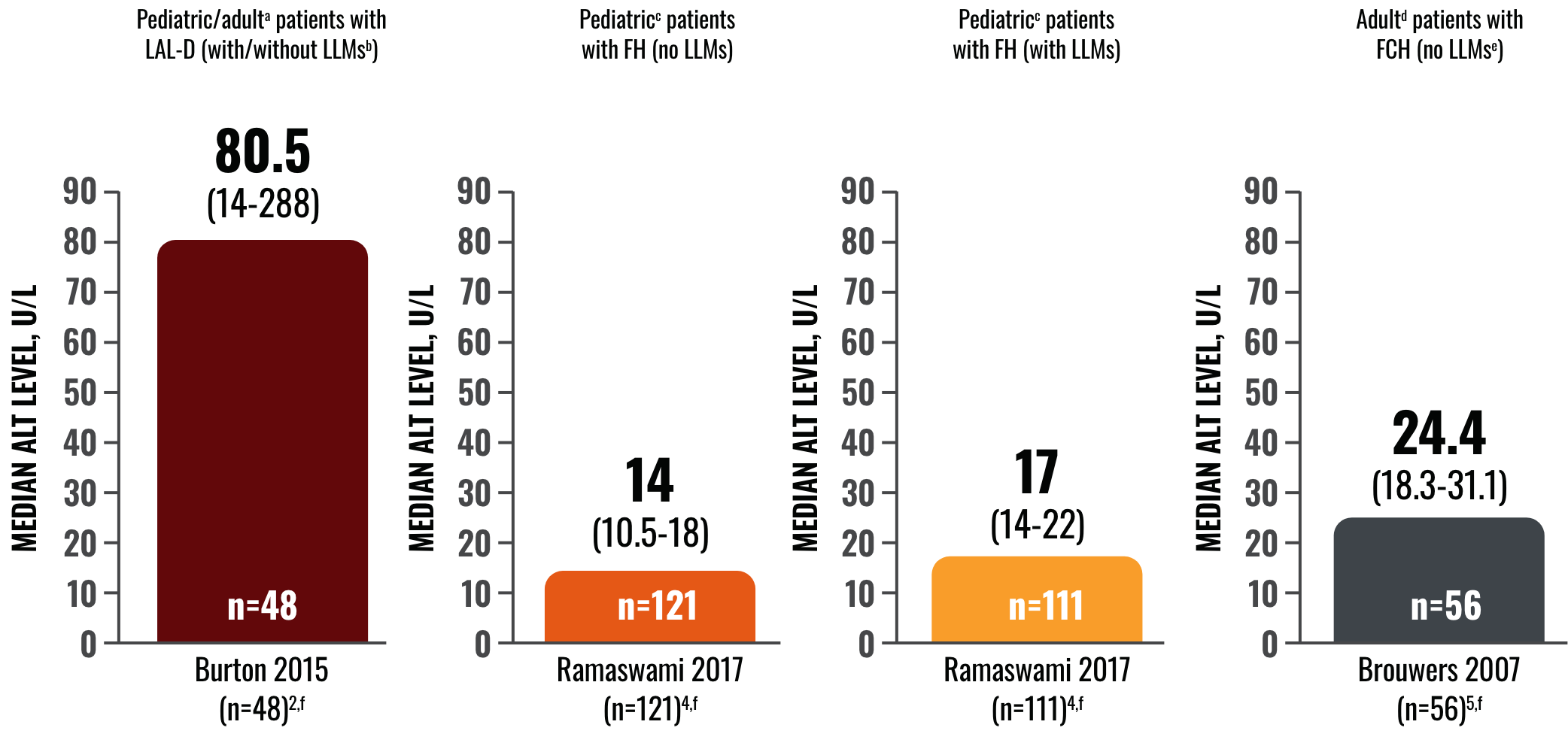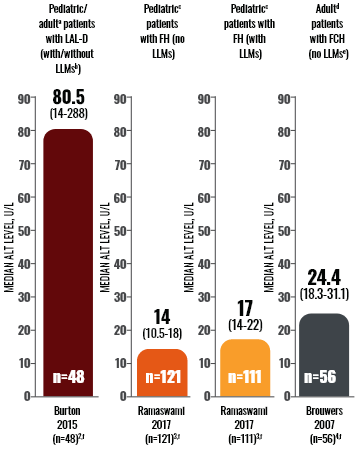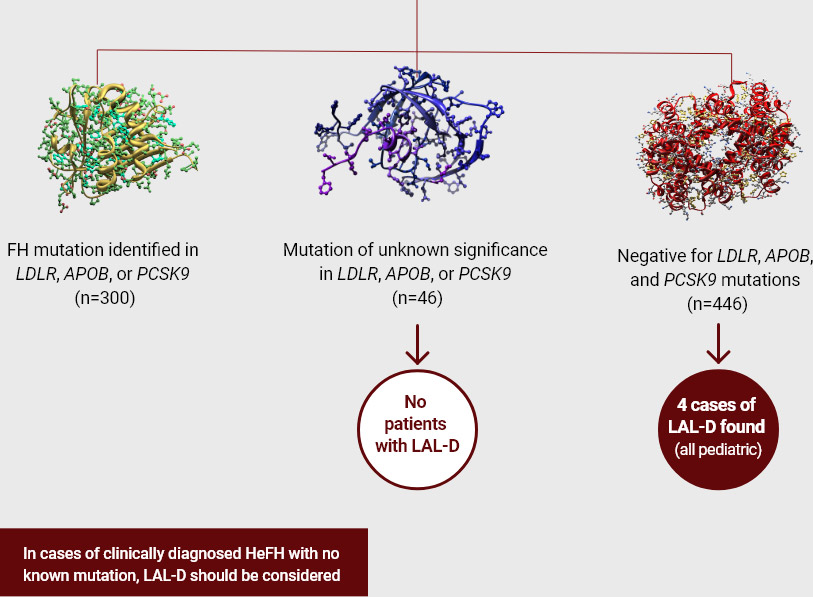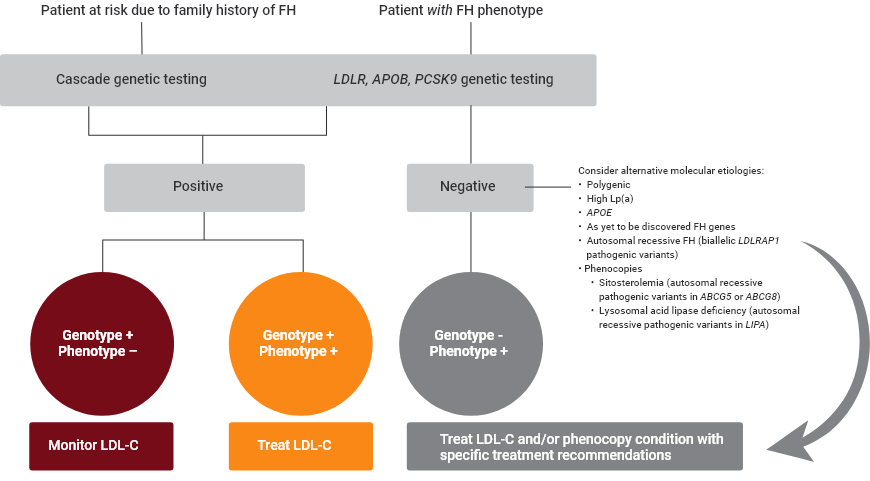LAL-D is a rare, genetic disease that causes enzyme deficiency leading to progressive and ongoing multiorgan damage1
Persistently elevated LDL-C in LAL-D can increase the risk for severe cardiovascular events1
Elevated ALT may help differentiate LAL-D from hereditary dyslipidemias2,3


- Adult Male ULN (29-33 U/L)6
- Adult Female ULN (19-25 U/L)6
- Pediatric Male ULN (30-70 U/L)7
- Pediatric Female ULN (29-65 U/L)7
Image from Burton BK, et al. J Pediatr Gastroenterol Nutr. 2015;61(6):619-625, Ramaswami U, et al. Arch Dis Child. 2017;102(3):255-260, and Brouwers MC, et al. Clin Sci. 2007;113(9):375-381.
These studies represent individual publications using different patient populations. Data are not directly comparable.
Abbreviations: LAL-D, lysosomal acid lipase; FH, familial hypercholesterolemia; FCH, familial combined hyperlipidemia; LLM, lipid-lowering medication; NICE, National Institute for Health and Care Excellence.
aIn the observational study of patients with LAL-D, the mean ± SD age at first recorded elevated transaminase was 14.5 ± 14.5 years.
b81% of patients reported use of LLMs at some point during disease course; ALT elevations typically persisted with no evidence of substantial and/or sustained change following diet modifications or LLMs.
cIn the FH study, NICE CG71 recommends testing of children at risk of HeFH by the age of 10 years; therefore, subjects are split into 2 categories: group ≤10 years and group ≥10 years old. The mean ± SD age of the ≤10 years old group is 7.3 ± 2.2 years old; mean ± SD age of the ≥10 years old group is 12.6 ± 1.7 years old.
dIn the FCH study, mean ± SD age of subjects with FCH was 50 ± 13 years old.
eLLMs were withdrawn 2 weeks prior to the study.
fInterquartile range.
↑ALT + ↑LDL-C should prompt testing for LAL-D2
THINK ABOUT LAL-D WHEN EVALUATIng FOR HETEROZYGOUS FAMILIAL HYPERCHOLESTEROLEMIA (HeFH)8
Portuguese FH Study
From a group of 446 patients with clinically diagnosed HeFH and no known mutation, 4 cases of LAL-D were found
~800 patients with clinical diagnosis of FH referred for genetic screening


Image adapted from Chora JR, et al. J Clin Lipidol. 2017;11(2):477-484.
TEST FOR LAL-D IN PATIENTS WITH SUSPECTED FH WHO ARE NEGATIVE FOR FH-CAUSING MUTATIONS9


Image reproduced with permission from Sturm AC, et al. J Am Coll Cardiol. 2018;72(6):662-680.
THE NATIONAL LIPID ASSOCIATION DEEMS GENETIC TESTING FOR MONOGENIC LIPID DISORDERS “REASONABLE” WHEN AN ACCURATE DIAGNOSIS MAY AFFECT CLINICAL APPROACH10
MONOGENIC DYSLIPIDEMIAS INCLUDE
- Familial hypercholesterolemia
- Familial chylomicronemia
- Sitosterolemia
- Cerebrotendinous xanthomatosis
- LAL-D (Wolman disease; cholesteryl ester storage disease)
- Abetalipoproteinemia or homozygous familial hypobetalipoproteinemia
Abbreviations: ALT, alanine aminotransferase; FCH, familial combined hyperlipidemia; FH, familial hypercholesterolemia; LAL-D, lysosomal acid lipase deficiency; LDL-C, low-density lipoprotein cholesterol; LLMs, lipid-lowering medications.
References: 1. Bernstein DL, et al. J Hepatol. 2013;58(6):1230-1243. 2. Burton BK, et al. J Pediatr Gastroenterol Nutr. 2015;61(6):619-625. 3. Reiner Ž, et al. Atherosclerosis. 2014;235(1):21-30. 4. Ramaswami U, et al. Arch Dis Child. 2017;102(3):255-260. 5. Brouwers MC, et al. Clin Sci. 2007;113(9):375-381. 6. Kwo PY, et al. Am J Gastroenterol. 2017;112(1):18-35. 7. Schwimmer JB, et al. Gastroenterology. 2010;138(4):1357-1364, 1364.e1-e2. 8. Chora JR, et al. J Clin Lipidol. 2017;11(2):477-484. 9. Sturm AC, et al. J Am Coll Cardiol. 2018;72(6):662-680. 10. Brown EE, et al. J Clin Lipid. 2020;S1933-2874(20)30081-7. 11. Lukacs Z, et al. Clinica Chimica Acta. 2017;471:201-205.
REGISTER TODAY
and receive all the latest LAL-D information.
*All fields are required
By clicking Submit, I agree to the Terms of Use
